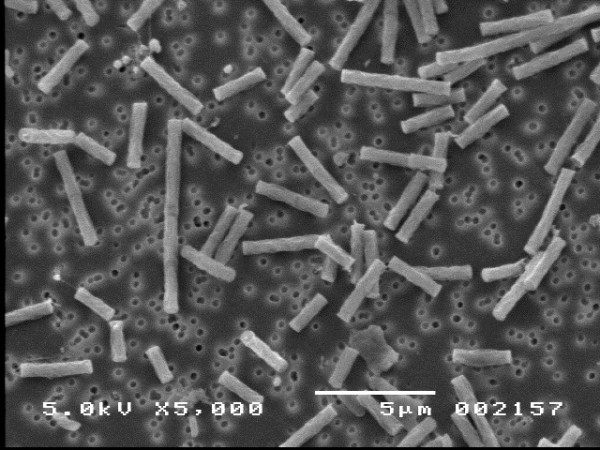Microorganism Study Gives Hope For Life On Mars
| Robert Sarkanen | | May 22, 2014 06:30 PM EDT |
New study suggests the oldest and simplest microorganisms on Earth could survive on Mars, explaining methane gas in the red planet's atmosphere.
Recent experiments by doctoral student in space and planetary sciences, Rebecca Mickol of the University of Arkansas, have shown that microorganisms known as methanogens can withstand the harshest imaginable conditions of Mars. This includes extreme temperature changes as well as a complete lack of oxygen, sunlight and organic nutrients.
Like Us on Facebook
The findings, presented at the 2014 General Meeting of the American Society for Microbiology earlier this week, have given researchers hope in finding life on Mars and were sponsored by NASA's Exobiology Program, dedicated to research life outside of the planet Earth.
The single-cell methanogen organisms belong to the domain Archaea, similar but distinct from that of bacteria.
They can be found in swamps, decaying tissue, within termites and herbivores, as well as the human intestinal tract, where they produce methane gas as a byproduct leading to flatulence.
The microorganism survives by hydrogen and carbon dioxide and expresses methane in return. They can obtain hydrogen from water or even the chemical reactions of certain minerals' interactions, and are known to survive in the most extreme conditions on Earth and now possibly even beyond.
The experiments tested two different species of methanogens, Methanogenium wolfeii and Methanobacterium formicicum, that thrive in hot and warm conditions respectively.
The test was to examine their ability to withstand the extreme temperature changes of Mars which, due to its thin atmosphere and distance from the sun, can vary between -90° C and 27° over the course of a single day.
Long term exposure to such drastic freeze/thaw cycles severely inhibited the growth of the organisms but they clearly survived, suggesting that they or other methanogens may be able to survive on or below the surface of Mars.
This follows a 2004 discovery that the Martian atmosphere contains notable quantities of methane gas, prompting questions of its origin. One possible source of the gas, according to professor of biological sciences Timoty Kral of the Arkansas Center for Space and Planetary Sciences, could be methanogens.
Due to the severe radiation conditions of the Martian surface, any presence of methanogens on Mars would probably be confined to enclosed subsurface spaces.
Methanogens reproduce asexually, contain no cell nucleus and are known to be visually highly similar to bacteria with rod or sphere shaped cells.
There are over 50 different known species of methanogens, all of which are highly sensitive to the presence of oxygen and have been found everywhere even beneath kilometers of ice or desert soil.
TagsAlien life, Mars, Methanogen, Microorganism, Study, Methane gas, University of Arkansas
©2015 Chinatopix All rights reserved. Do not reproduce without permission
EDITOR'S PICKS
-

Did the Trump administration just announce plans for a trade war with ‘hostile’ China and Russia?
-

US Senate passes Taiwan travel bill slammed by China
-

As Yan Sihong’s family grieves, here are other Chinese students who went missing abroad. Some have never been found
-

Beijing blasts Western critics who ‘smear China’ with the term sharp power
-

China Envoy Seeks to Defuse Tensions With U.S. as a Trade War Brews
-

Singapore's Deputy PM Provides Bitcoin Vote of Confidence Amid China's Blanket Bans
-

China warns investors over risks in overseas virtual currency trading
-

Chinese government most trustworthy: survey
-

Kashima Antlers On Course For Back-To-Back Titles
MOST POPULAR
LATEST NEWS
Zhou Yongkang: China's Former Security Chief Sentenced to Life in Prison

China's former Chief of the Ministry of Public Security, Zhou Yongkang, has been given a life sentence after he was found guilty of abusing his office, bribery and deliberately ... Full Article
TRENDING STORY

China Pork Prices Expected to Stabilize As The Supplies Recover

Elephone P9000 Smartphone is now on Sale on Amazon India

There's a Big Chance Cliffhangers Won't Still Be Resolved When Grey's Anatomy Season 13 Returns

Supreme Court Ruled on Samsung vs Apple Dispute for Patent Infringement

Microsoft Surface Pro 5 Rumors and Release Date: What is the Latest?










